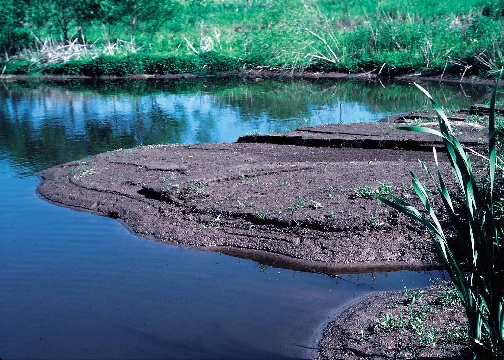Competency Area 7: Non-point source pollution AEM
PO 71. Describe the main sources of agricultural Non-point source (NPS) pollution and their origins.
- Nitrogen
- Phosphorus
- BOD (Biological Oxygen Demand)
- Sediment
- Pesticides
- Pathogens
- Silage leachate
- Chemicals and toxins
- Processing and wastewater
Sediment – sources are primarily erosion from cropland, especially when there is no vegetative cover on the fields. Sediments may also originate from laneways, field roads, and unvegetated surface drainage ditches.
Pesticides – sources are pesticide runoff and leaching, especially when rain occurs shortly after pesticide application. Pesticide drift may also find its way back into surface waters.
Pathogens – sources are calf housing areas and manure applications, especially when the manure is surface applied and rain causes runoff prior to the manure having time to dry. Surface water and tile drain discharges are usually more impacted than groundwater, but groundwater may also be affected when manure is applied to coarse textured soils, or to shallow soils overlying fractured bedrock.
Silage leachate – sources are from uncontrolled loss and runoff from silage storage facilities (uncovered bunkers).
Chemicals and toxins – see Pesticides.
Processing waste water – sources are the uncontrolled loss or inadequate treatment and disposal of these wastewaters from livestock facilities (i.e., milkhouse drains).

Sediment buildup in a farm pond
Photo courtesy of NRCS
Quick Links
- Competency Area 1: Basic soil properties
- Competency Area 2: Soil hydrology AEM
- Competency Area 3: Drainage and irrigation AEM
- Competency Area 4: Soil health and compaction
- Competency Area 5: Soil conservation AEM
- Competency Area 6: Watershed hydrology AEM
- Competency Area 7: Non-point source pollution AEM
- Competency Area 8: Concentrated source pollution AEM
- Competency Area 9: Conservation planning AEM
